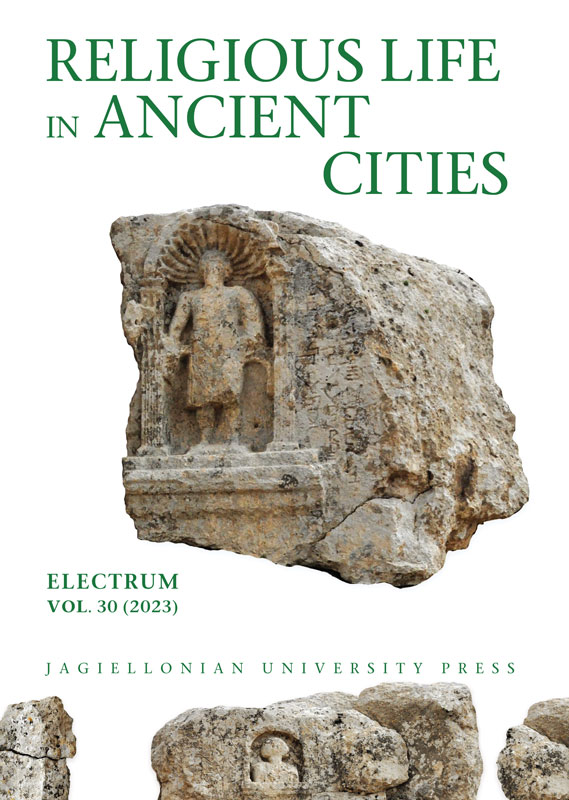Sîn City: Notes on the Moon God of Ḫarrān/Carrhae in the Partho-Roman Period
Sîn City: Notes on the Moon God of Ḫarrān/Carrhae in the Partho-Roman Period
Author(s): Michael BlömerSubject(s): History, Social history, Ancient World, History of Religion
Published by: Wydawnictwo Uniwersytetu Jagiellońskiego
Keywords: Carrhae; Ḫarrān; Osrhoene; North Mesopotamia; moon god; Sumatar; ancient coins; cult standards; religious iconography; Edessa; Sabians
Summary/Abstract: Today the city of Ḫarrān/Carrhae is mainly known for the famous battle, in which the Roman general Crassus was defeated by a Parthian army in 53 BCE. However, Ḫarrān was also one of the most important religious centres of North Mesopotamia. Since the Bronze Age, the moon god Sîn of Ḫarrān was popular in the wider region, and it is well known that the late Assyrian and Baby- lonian kings supported the cult and rebuilt the temple of Sîn. Archaeological evidence and written sources attest to the great popularity of Sîn of Ḫarrān at that time. Much less is known about the development of the cult in the subsequent periods, but the evidence assembled in this paper in- dicates that it continued to thrive. An important but so far largely ignored source for the study of Sîn are coins, which were minted at Ḫarrān in the second and third century CE. They suggest that some distinctive features of the Iron Age cult still existed in the Roman period. Most important in this regard is the predominance of aniconic symbolism. A cult standard, a crescent on a globe with tassels mounted on a pole, continued to be the main of representation of the god. In addition, two versions of an anthropomorphic image of the god can be traced in the coinage of Ḫarrān. The first shows him as an enthroned mature man. It is based on the model of Zeus, but his attributes iden- tify the god as Sîn. The second version portrays him as a youthful, beardless god.Late antique sources frequently mention that the people of Ḫarrān remained attached to pagan religion, but the veracity of these accounts must be questioned. A reassessment of the literary and archaeological evidence suggests that the accounts of a pagan survival at Ḫarrān are hyperbolic and exacer ated by negative sentiments towards Ḫarrān among writer from the neighbouring city of Edessa.
Journal: Electrum. Studia z historii starożytnej
- Issue Year: 2023
- Issue No: 30
- Page Range: 307-338
- Page Count: 32
- Language: English

